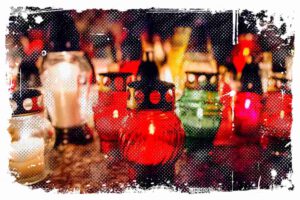Poland’s Independence Day is known in Poland as Narodowe Święto Niepodległości. It is a national holiday on November 11th that celebrates the country’s independence. The day is marked with parades, speeches, and patriotic displays, as well as the laying of wreaths at national monuments and memorials. One of the most famous traditions associated with Poland’s Independence Day is the annual parade in Warsaw. It features military units, marching bands, and regional teams representing cultural groups from all over the country.

Traditional Celebrations and Activities
Poland celebrates its Independence Day every year on November 11th. There are several traditions associated with this day. One of these is displaying the national flag, which is white and red. It may be installed on the buildings or private homes by the owners. The streets are often decorated with national banners as a symbol of victory. Another tradition is wearing a red and white cotillion, also known as a rosette. This symbol represents important events in Polish history. It is worn on the chest to show pride in being Polish.
Singing the national anthem, which in Poland is called Mazurek Dąbrowskiego, is an important part of the celebration. Anthem is sung in many places (in Poland but also abroad) to honor the country’s history.
There are about 1,000 organized events held each year to celebrate Independence Day. Many of these events involve singing the national anthem, but there are also other projects that invite people to come together and participate in this special anniversary. The most important events include:
↳ PRO TIP: Do you like traveling? Then before you buy any ticket or book an attraction, check if it's available in this worldwide Viator Database. You may save a lot of money and time. No need to thank me :)
Ceremonies at the Tomb of the Unknown Soldier
The main celebrations are held in Warsaw at the Tomb of the Unknown Soldier, a monument for soldiers who fought for Poland’s independence. People light candles and pray for the fallen soldiers at this tomb. There are also smaller monuments dedicated to unknown soldiers in many other old cemeteries in whole country.
On Independence Day, flowers are laid at the grave by representatives of the country’s authorities, including the president and his wife. The events at Jozef Pilsudski Square in Warsaw are usually attended by television, military, and police personnel, and can be seen on television.
Independence Run
One way that we celebrate Independence Day is by participating in the annual Independence Run. Event takes place in many cities throughout the country, including Poznań, Wrocław, and Warsaw. Participants line up at the starting line in two columns and are given white and red T-shirts, which create large flag of Poland. This event is a way to commemorate important historical events and to stay physically fit at the same time.
Parades on the Streets of Polish cities
Every year on Independence Day, people in Poland march on the streets of cities throughout the country to show their respect and happiness. These marches are often accompanied by the carrying of the white and red flag, the singing of patriotic songs, and performances organized by reconstruction groups dressed in early 20th century uniforms. These events serve as a way to honor Poland’s history and culture and to gather as a nation.
Independence Concert
There are many ways to celebrate Independence Day, including through music. One way to do this is by attending the annual Independence concerts. They are traditionally held at the Warsaw Uprising Museum. These concerts feature patriotic songs, arrangements of Polish anthems, and military songs performed by musicians and singers.
Independence Day Songs
The most popular patriotic songs in Poland are listed below. Singing tradition helps to instill patriotism in children and can be great way of spending time with family. The most famous patriotic songs in Poland include:
- „My, pierwsza Brygada” translates as “We, the First Brigade”
- “Czerwone maki na Monte Cassino” translates as “Red Poppies on Mount Cassino.”
- „Rota”
- „Szara piechota” translates as “Grey Infantry”
- „Przybyli ułani pod okienko”.
Joint Singing of the Anthem
One of the biggest projects that involves people from all over Poland is the “Independence to the Anthem” campaign. This campaign is organized by schools, local governments, cultural institutions, and informal associations in at least 700 locations in Poland and around the world. It’s main goal is to gather people in order to jointly sing the Anthem.
The History of Poland’s Independence Day
November 11th is a special day in Poland. On this day in 1918, Marshal Jozef Pilsudski became the leader of the Polish army. The peace treaty was signed in France, which meant that Germany lost World War I officially. This particular event created the chance for Poland to become an independent country again after being partitioned for 123 years.
To honor this historic event, Poland celebrates its independence every November 11th. The first official celebration took place in 1920. Even though the borders of the Republic were not yet established, the celebration became a national holiday in 1937. It is a time for the country to come together and remember its culture, history, and independence. It is also a chance to honor the people who fought for Poland’s freedom.
During World War II, the occupiers forbade to celebrate Independence Day on November 11th. Despite that, the Poles continued to celebrate the holiday in secret. They even took part in acts of small sabotage, such as boycotting German newspapers on November 11th and avoiding visits to cinemas, restaurants, and cafes. Patriotic inscriptions and the Fighting Poland symbols were displayed on walls and other public places to demonstrate patriotism.
The underground independence press played a significant role in maintaining the spirit of patriotism among the Polish population during this time. It reminded people the importance of November holiday and encouraged them to stay home and spend time with their families. Despite the difficult circumstances, the Poles remained committed to celebrating their country’s culture, history, and independence.
The Importance of November 11 in the Communist Era
After World War II ended, Poland’s communist government, which was heavily dependent on the Soviet Union, abolished the Independence Day. Instead, the government established the National Holiday of Poland’s Rebirth on July 22nd. This marked the anniversary of the proclamation of the Communist Manifesto and the country’s decision to remain in the Soviet sphere of influence.
The Communist government’s goal was to break with the tradition of celebrating November 11th and to emphasize the importance of their power in Poland. However, these efforts were only partially successful. The celebration of July 22nd did not completely replace National Independence Day in the minds of the Polish people.
In fact, the November 11th anniversary remained important to the anti-Communist opposition, both in Poland and abroad. Unofficial celebrations on this day helped to unite and served as a form of resistance against the propaganda of the PRL (Polish People’s Republic) leaders.
National Independence Day was brought to live in 1989, when the Communist system in Poland was in decline. Since then, the holiday has been celebrated with great enthusiasm, with representatives of the highest state authorities and milions of Poles participating in events such as marches, historic parades, and religious ceremonies.
Bibliography
- https://mojaniepodlegla.pl/mn/11-xi-w-dokumentach-aip/historia-obchodow-11-li/6613,Historia-obchodow-11-Listopada.html
- https://muzeum1939.pl/narodowe-swieto-niepodleglosci/aktualnosci/4971.html




